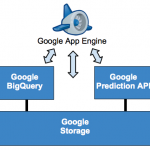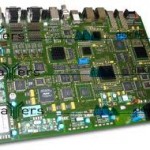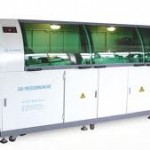Next in our series examining emerging power-efficient wireless chipsets, we examine the ANT technology. It’s a wireless sensor network technology that defines a protocol stack for use with small, embedded system-on-chip radios operating in the 2.4 GHz ISM band. ANT provides power-efficient operation for battery-powered wireless devices, low overhead in the communications link, interference tolerance and worldwide ISM spectrum compatibility.
Similar in some respects to Bluetooth Low Energy and IEEE 802.15.4, ANT is aimed at applications in wireless connected, networked devices for health, sports, home automation and industrial control applications.
Whilst ANT has some similarities to Bluetooth Low Energy and IEEE 802.15.4, there are some differences. For example, the ANT physical layer supports an on-the-air data rate of up to 1 MBit/s, compared to 250 kbit/s for IEEE 802.15.4 operating at 2.4 GHz.
This means that an ANT system needs to stay on the air for a shorter amount of time to transmit a given amount of data as compared to an 802.15.4 system. Another noteworthy difference is that the ANT protocol is proprietary – whilst ANT transceiver chips are available from some manufacturers such as Nordic Semiconductor and Texas Instruments, these ANT-protocol transceivers are basically “black boxes” of proprietary hardware and firmware which are interfaced to an external user application processor over a UART, SPI or USB interface.
Similar to IEEE 802.15.4 and Bluetooth Low Energy systems, ANT systems can be configured to spend long periods in a low-power “sleep” mode with a current consumption on the order of microamps, wake up briefly to communicate, with a peak current consumption on the order of 10 milliamps during active transmission, and then return to sleep mode. At low message rates the average current consumption can be less than 60 microamps on some typical devices.
ANT-based wireless sensor network nodes are capable of acting as either masters or slaves within the network, that is, acting as transmitters, receivers or transceivers as required to route data where it needs to go within the network whilst also minimising the power consumption of each node. For example, the RF transmitter of a given node is powered down if that particular node only needs to receive at given time. Every node is capable of determining when to transmit based on the activity of its neighbours.
Due to the low power requirement the ANT system has been relatively widely adopted in the athletics and sports sector, particularly for fitness and performance monitoring. ANT transceivers are embedded in equipment such as heart rate monitors, speed and cadence sensors for athletics, blood pressure and blood glucose monitors, pulse oximeters and temperature sensors. Examples of existing commercial product lines employing ANT technology include Nike’s performance monitoring products as well as the Garmin Edge range of cycling computers.
Furthermore, ANT+ is an extension of the ANT protocol which adds interoperability between devices – allowing for the standardised networking of different ANT devices to facilitate the collection and interpretation of sensor data from multiple sources. For example, ANT+ enabled fitness devices such as heart rate monitors and pedometers can have all their data collated together and assembled into performance metrics, allowing a more holistic view of the user’s fitness and performance based on multiple data types.
Three types of message transmission can be accommodated by the ANT protocol – broadcast, acknowledged and burst. Broadcast messaging is one-way message communication from one node to another, where the receiving node transmits no acknowledgement. This type of message is suited to sensor-network applications and is the most power-efficient mode of operation.
Acknowledgement of each received data packet can also be transmitted by the receiving node, in acknowledged message mode, although there are no retransmissions. This mode of operation is well suited to control and automation applications where accidental transmission of a duplicate control or actuation message should be avoided. Burst messaging mode may also be employed, where multiple messages are transmitted using the full data bandwidth.
The receiving node acknowledges receipt of each packet, which is sequence numbered for traceability, and informs the transmitting node of any corrupted packets which are then retransmitted. This mode is suited to data transfer where the overall integrity of the data needs to be maintained.
ANT employs a mechanism to ensure RF coexistence in the relatively congested 2.4 GHz ISM spectrum that is different from from the spread spectrum mechanisms employed by 802.11, 802.15.4 and Bluetooth networks. This time-based multiplexing scheme provides the ability for each transmission to occur in an interference-free time slot within the defined band. The radio transmits for less than 150 microseconds for each message, allowing a single channel to be subdivided into hundreds of time slots.
This is an adaptive, isochronous scheme, meaning that it doesn’t require a master clock synchronising every device. Each device starts broadcasting at regular intervals, but then modifies its transmission timing if another device is transmitting in that particular time division. This allows ANT to adapt to a congested RF environment whilst also ensuring that there is no overhead when interference is not present, minimising power consumption whist maintaining a high level of network integrity.
In a very congested RF environment, if this time-division scheme is not sufficient, ANT does have the capability for frequency agility, allowing a frequency hop to an alternative 1 MHz wide channel and then going back to time-sharing coexistence. This frequency-hopping is controlled by the application processor that controls the ANT chip.
Although a broad overview, the ANT system can be thought of as a useful and reliable method of data communication between devices with limited power supply and used in areas of high RF congestion – especially idea for consumer devices. And if this meets your needs but you’re not sure how to progress with a reliable implementation, we can partner with you to take care of this either in revisions of existing products or as part of new designs.
With our experience in retail and commercial products we have the ability to target your product’s design to the required end-user market and all the steps required to make it happen.
We can create or tailor just about anything from a wireless temperature sensor to a complete Internet-enabled system for you – within your required time-frame and your budget. For more information or a confidential discussion about your ideas and how we can help bring them to life – click here to contact us, or telephone 1800 810 124.
LX is an award-winning electronics design company based in Sydney, Australia. LX services include full turnkey design, electronics, hardware, software and firmware design. LX specialises in embedded systems and wireless technologies design. https://lx-group.com.au
Published by LX Pty Ltd for itself and the LX Group of companies, including LX Design House, LX Solutions and LX Consulting, LX Innovations.








